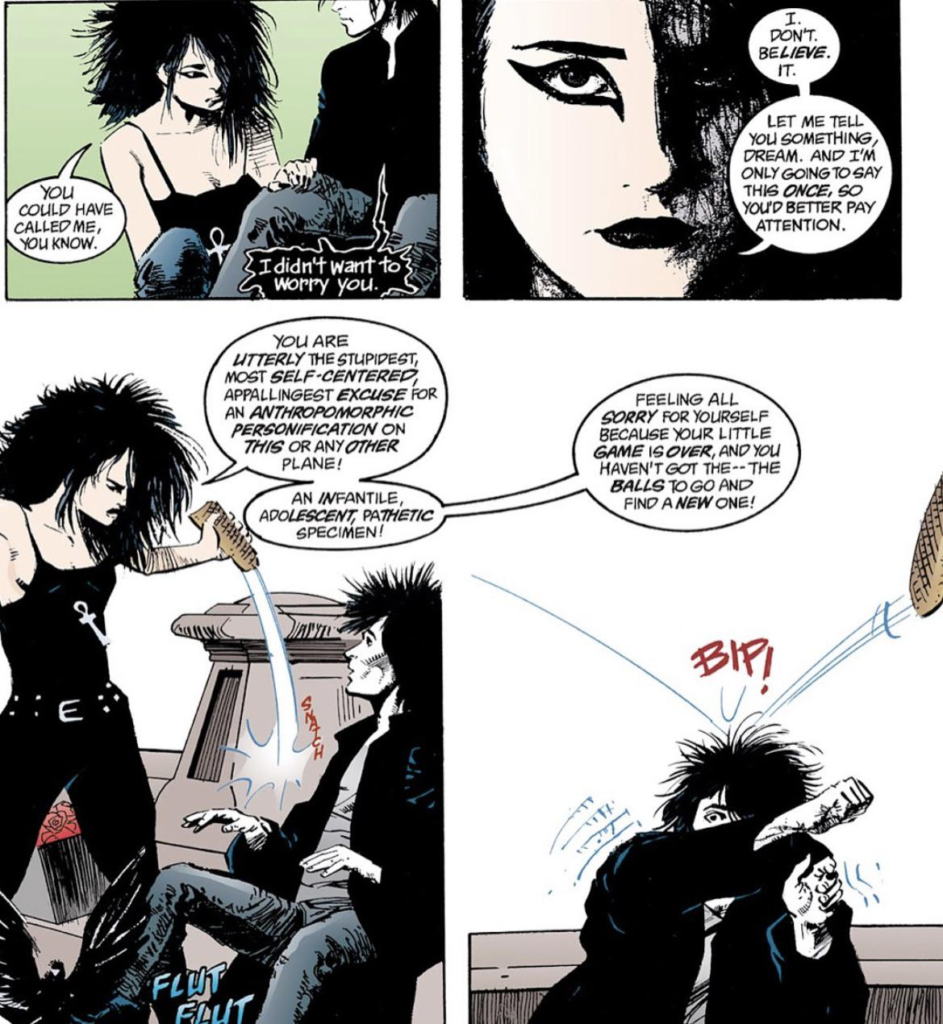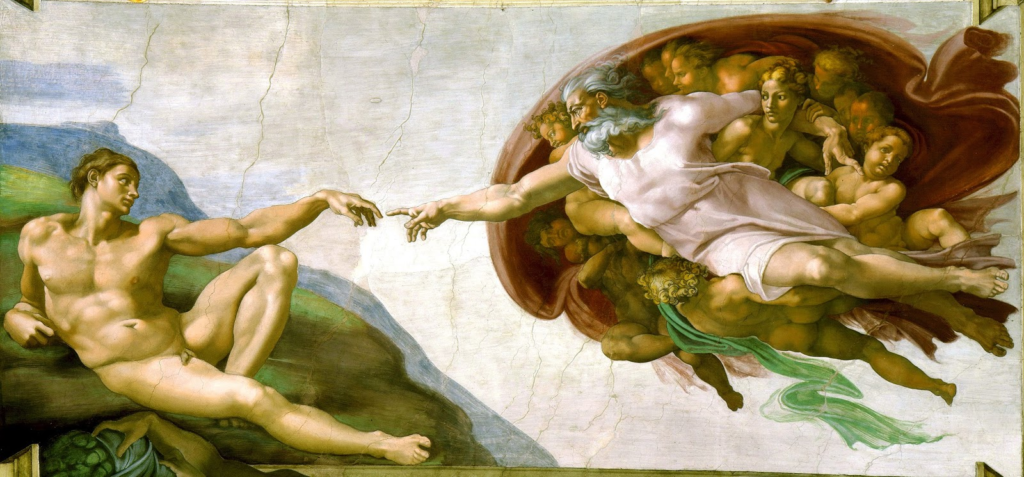The the transition of the old gods to the new
*this contains spoilers for the comic Sandman and for the comic Lucifer. If you’d like to read those works without insight into the plot, do come back later.
In Neil Gaiman’s Sandman (published 1989-1993) the author tackles themes of the changing nature of divinity, in which the gods change as the world does – first by presenting a divine being as in a state of flux and change and then by following him as he changes through time to his eventual realization that he has no more place in this world.

The title character is represented as coming into his own after over 100 years of imprisonment, and discovering that he no longer fits his office, his titles, or his past deeds. The things that were done to him changed him. And worse, because he was kept in stasis rather than changing with the rest of the world, he was unable to change with it – and so found himself in a state of not fitting with the world.

That’s repeated again and again in how Dream interacts with the world. He’s brought to shame and to feel remorse and even to apologize for imprisoning Nada in hell for 10,000 years. He brings himself to forgive treason, to help an old lover and to grieve how the world has changed around her – and then to free his son. He finds that the dreams of his past are not the dreams of his present. And so he realizes that in no longer fitting, he has the opportunity to make way for something new.

It’s something of a thing that modern life lacks many of the unknowable forces of the historic experience of being alive.
Sure, you have to deal with the pressure and stress of an unending array of media and notifications, but you have the tools to understand yourself and the world around you.
The volatile forces of nature have been tamed in that when crops fail or a wildfire devastates forests or the fish aren’t spawning this year, we can investigate and produce viable and rational answers. We’ve tamed the old gods of raw and terrifying nature and so we no longer see them as raw and terrifying. But that hasn’t always been true.
That’s evident in how almost every mythos personifies deities that explain away the forces that buffet their lives to-and-fro. Rain gods, Masters of fish and of grain, goddesses of the harvest, manna, ancestors who must be appeased before they grant their knowledge of the fields to their living sons and daughters. That concept is known as “the enchanted universe” where natural forces are given mystical properties and even personifications to explain away their whims and to create an illusion of influence.
Historically, those forces have been unknowable, cruel, and terrifying.

Yet, one of the functions of westernism, rationalism, and (I know this sounds inherently contradictory) western Christianity is the stripping away of that enchantment to create a mundane reality.
“By destroying pagan animism, Christianity made it possible to exploit nature []. [] The spirits in natural objects, which formerly had protected nature from man, evaporated. Man’s effective monopoly on spirit in this world was confirmed, and the old inhibitions to the exploitation of nature crumbled” – The Historical Roots of the Ecological Crisis – Lynn White Jr (1967).
[e.g., only human is spiritual, only human is divine]
“And the Lord God formed man of the dust of the ground and breathed into his nostrils the breath of life; and man became a living soul”
The thing is, that ideology didn’t come about until the advent of Descartes, and his introduction of the animal as a soulless being, an automaton with purely mechanical behavior – strictly opposed to that of the human and “I think, therefore I am”.
The “fall” of the spiritual into the animal.

Of course, that logic is also flawed and inherently specieist.
God created man in his image, but what is his image? In historical contexts, “God’s image” was “the image of man”.
Today, those definitions are broader, the imago dei less a black and white “Yes or no” does this image exactly represent god, and more of a descriptor, rather like when you say “The color yellow” and must then encompass not only the prototype yellow that comes to mind but also every hue and saturation of yellow that meets the qualifications enough to call it yellow.

Something can be an image of something in a wide variety of ways. Take a photograph of sunflowers and put it next to an impressionist painting and then again to a child’s drawing, each is a likeness and each contains different degrees of the muchness of a sunflower but it could not be argued against that each is a likeness of a sunflower.
So if the mythos says that man was created in god’s image, would not then the mammoth with very similar bones be a likeness as well? Man is after all, in this story, made of the same stuff.
Yet the philosophical movements of the 1600s enabled a divide, shifting the world from a viewpoint of “a chorus of birds singing their praises to god” to “this bird is purely mechanical in behavior”.
As much harm as that type of black and white thinking has done, the wheels of rationality continued to work by creating a vacuum. What do you do with your demons when you have no fear of the things that go bump in the night? You reimagine them to fit other needs.
The same god that destroyed Sodom and Gomorrah and drowned every living thing but a man, his progeny, and two and two of every living thing is now touted as the god of love and kindness.
And that is a result of the changing of times rather than the inherent nature of the deity in question.
If the awe-inspiring forces of nature can be understood, predicted, manipulated, then the spiritual is no longer about negotiating with terror.
Which is also why the rise in charity by the church and by its attendees rose directly in line with the increase in education of the 12th and 13th centuries. As people became more aware of how their world worked, they needed less justification for the terror of unknowable forces and instead sought control over the forces which they understood. No longer negotiation with the unknowable, but direct action to change.

That theme of the old gods dying so that the new can be born is further represented across multiple side-characters and plot arcs, most notably that of Lucifer Morningstar, who gives up his sense of self to free himself from the expectation and *duties* of the old gods.

Not in giving way to the new, but in saying “my role is not needed anymore”, it’s time to move on. What do you do with your old gods when you don’t need them anymore? Do you forget them, or do you repurpose them and make something new?

Trackbacks/Pingbacks